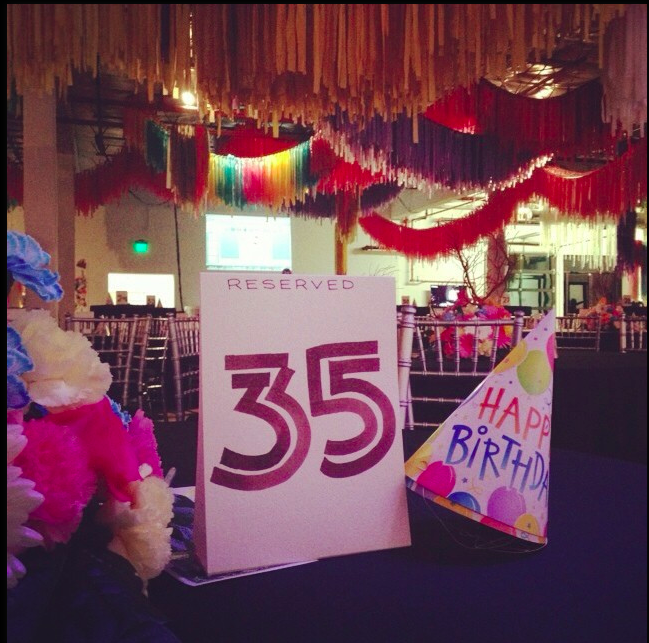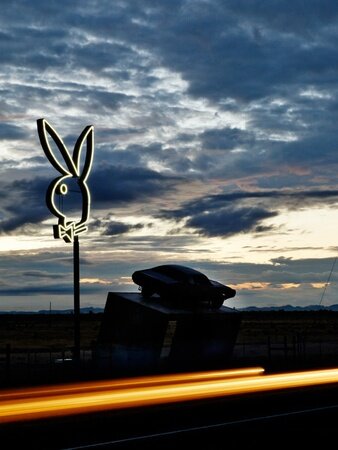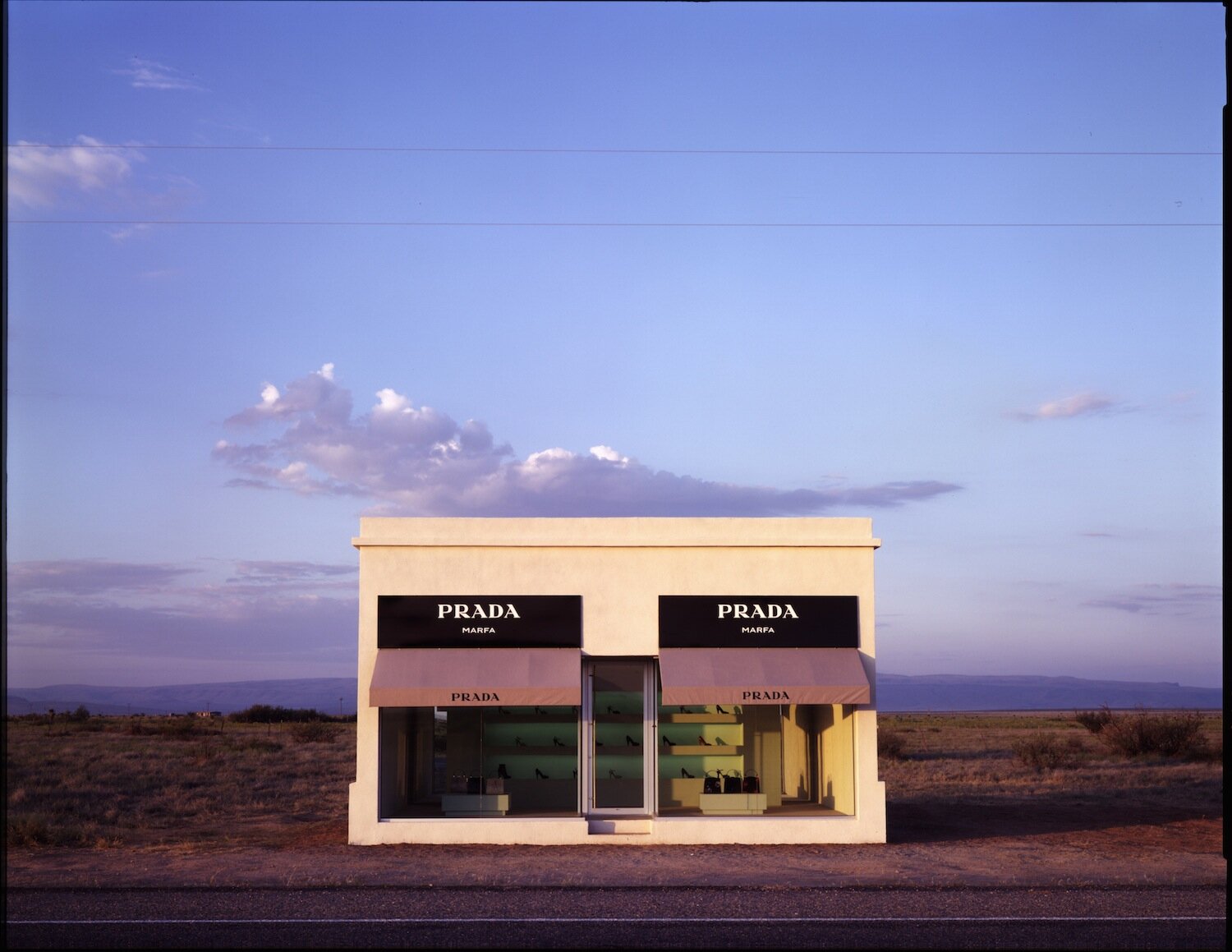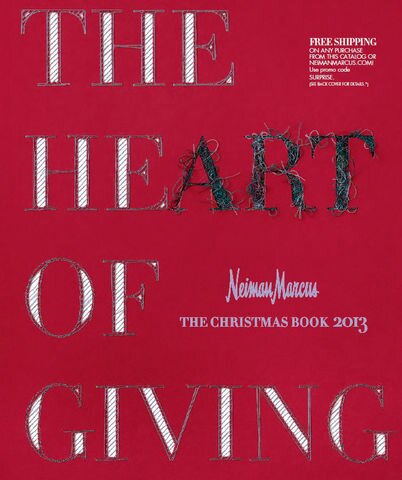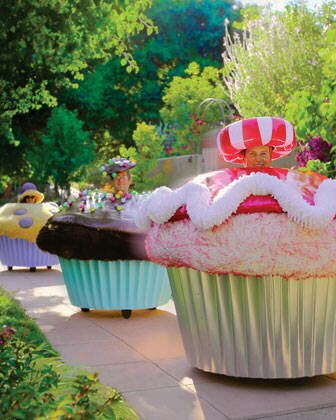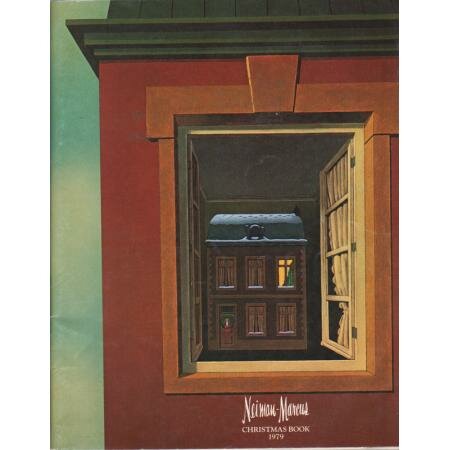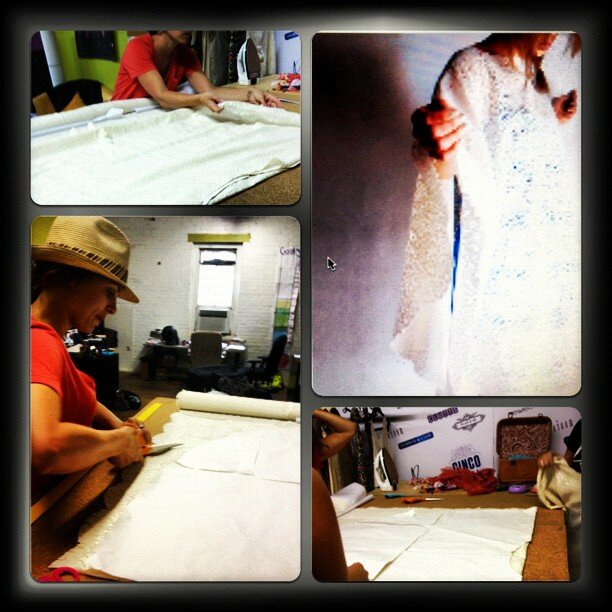-
Follow Us
-
Search
-
Recent Posts
- Big Design Ideas
- the perfect graduation dress
- fashion figures
- spring 2014 trends
- festival fashion
-
Recent Comments
- Quantumnerd on Ralph Lauren hires first plus-size model
- The ranch is a runway: Why Texas is a luxury brand hotbed | KayandJerry-Watkins.org on Y’all ready for this? Karl Lagerfeld is coming to Dallas
- on The most important paper you’ll ever write. Or is it?
- on TOMS Aviators change your look — and more
- on alex and ani: my new sweethearts
-
Archives
-
Categories
Monthly Archives: December 2013
All of the Lights
By Alexa Malevitis
Who knew little white lights could bring so much joy during the holidays? There is no better place to get in the holiday spirit than Dallas’ Highland Park. Take a ride with Threejays Carriages on their famous holiday carriage rides and marvel at the beautifully lit homes and trees. Feel as though you have stepped into an enchanted winter wonderland with the sound of horses’ hooves, sleigh bells and holiday carols. Marvel at the stylishly decorated homes complete with a life-size Santa, wrapped packages neatly presented on the lawn, and lights framing every sidewalk, walkway and tree. So grab your friends, a blanket and a gingerbread latte and indulge in the magic of the holiday season.
Laura Mercier’s BB Cream
By Samantha Peltier
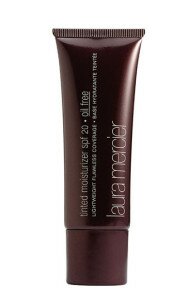
image via lauramercier.com
The beauty world is obsessed with Laura Mercier’s BB cream — to the point where other brands are trying to one up this easy-to-apply wonder by introducing “CC” cream. I’m just waiting for the “DD” creams.
But for now, I’ll continue to use my favorite of Mercier’s BB creams — the Laura Mercier Tinted Moisturizer – on a daily basis. It is light on the skin. And just a dab on the face, along with some eyeliner and mascara, and you’ll look perfect for a long day at work.
The tinted moisturizer has only a hint of a sunscreen scent, which is a lot less than the over-powering odor of most creams, and it covers up all of the red, acne-scared spots on my face.
The best part about the cream is that I barely notice it throughout the day, unless of course I look in a mirror. It’s the perfect lightweight foundation.
Dallas’ Edgier Art Museum
By Alexis Wulf
Entering the Dallas design district one would not expect to find much nestled in between the multiple bail bondsman storefronts and warehouses. But on Glass Street lies a hidden gem: The Dallas Contemporary.
The lesser-known of Dallas’ art museums, the Dallas Contemporary is a non-profit that’s been in Dallas for 35 years, offering an edgier collection of art than other local venues.
The Dallas Contemporary. Photo via artandseek.net
The Dallas Contemporary just celebrated its 35th anniversary with a Birthday Bash that included a 35-hour celebration ending in a party. The celebration featured 35 artists from the Dallas-Fort Worth area as well as performances throughout the night.
This was no fancy-shmancy boring museum gala though. One of the art exhibitions featured was live tattooing. That’s right: Dru Bias and Will Card of Saints & Sinners Tattoo in Carrolton were inking people while guests looked on.
Other entertainment was provided by the Harem Jewels, a belly dancing troupe, a group of performing drag queens, and performance artist James Gilbert whose interactive “art” involved wrestling any party guests who volunteered.
photo via dallascontemporary.org
Exhibitions at the Dallas Contemporary constantly rotate to provide current and diverse art each season. One of the most notable past exhibits was Inez Van Lamsweerde and Vinoodh Matadin’s “Pretty Much Everything.” The exhibition is “a nearly 700-page tome that documents their photographic journey from fashion campaigns to cover stars.” (vmagazine.com)
Lamsweerde and Matadin’s work has been featured in Vogue magazine and W magazine, among others, and their photographs have appeared in ads for brands such as Saint Laurent, Christian Dior, Givenchy and Chanel, to name a few. This collection was featured at the Dallas Contemporary in the fall of 2012.
Wallflower Management, a local Dallas modeling agency, hosted a party at The Dallas Contemporary during the Pretty Much Everything exhibit. Creative Directory Tammy Theis used one wall of the museum to display the agency’s prints next to the exhibition pieces. Theis said: “Our images focus more on art and fashion combined.” The result — an intersting juxtaposition of art and fashion, design and commerce.
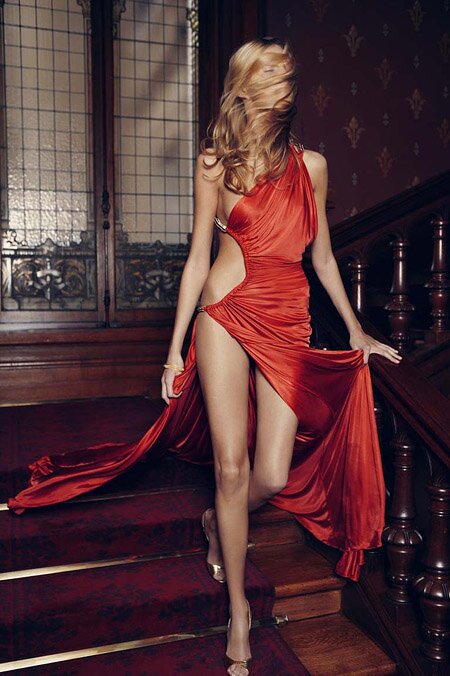 Anja Rubik Descending a Staircase – Vogue Paris via dallascontemporary.org
Anja Rubik Descending a Staircase – Vogue Paris via dallascontemporary.org
Currently five exhibits are on display at the DC and four more were just announced for spring of 2014. However, the most anticipated exhibition will be this summer. The “Playboy Marfa,” a 40-foot-tall neon Playboy bunny logo, has been on display in the artsy Texas town on Highway 90.
Best known for the “Prada Marfa,” a display of “pop architectural land art,”(culturemap.com) Marfa had some residents who showed concern about the Playboy logo in their midst. The Dallas Contemporary has accepted the sign for exhibit indefinitely, since the Texas Department of Transportation deemed its roadside location in the Texas town illegal.
The DC’s decision to harbor this controversial artwork has created some buzz, but that is nothing the avant-garde? museum can’t handle.
photo via ballroommarfa.org
Be sure to check out the exhibitions – by George Herold, Faile, Kevin Todora, Kristen Cochran and Lucia Simek – on display now, too. Admission is free and hours are from 11 a.m. to 6 p.m. Tuesday through Saturday and noon to 5 p.m. on Sunday. Student memberships are available for $35. For more information visit dallascontemporary.org.
A CHRISTMAS STORY
By Alexa Malevitis
Some families cuddle up with hot cocoa next to a fire and read classic tales of Santa Claus on the night before Christmas. Fashion lovers curl up with a glossy red book.
The long-awaited Neiman Marcus Christmas Book showcases the season’s most lavish, beautiful, expensive and often outrageous gifts. The book, which debuted in 1915, has featured such gifts as a baby elephant from Thailand, a pleasure cruise for 598 of your closest friends and a customized golf cart.
“People heard of this store where you could buy lipstick or a camel,” said Ginger Reeder, vice president of corporate communications for Neiman Marcus.
The popular website , wrote an in October featuring the 16 most insane gifts found in vintage Neiman Marcus Christmas books. Gifts went back to the year 1962 and ranged from a Noah’s Ark replica complete with livestock that priced for $588,247. Unsurprisingly, no one purchased the gift and the ark was never built. In 2009, one could buy a cupcake car for $25,000 to drive around looking as stylish as ever.
HISTORY
The world famous Neiman Marcus “book” started out as a Christmas card, inviting customers to the store to shop for the holidays. It wasn’t until 1926 that the first catalog appeared consisting of 16 pages that showcased beautiful and sometimes extravagant gifts at a variety of prices points.
In 1959 brothers Stanley and Edward Marcus presented in the catalog’s pages a black Angus steer, to be delivered on hoof or in steaks, complete with a silver-plated outdoor cooker. This set off a tradition of unusual gifts that continues to this day.
In 1960 the first “His and Hers” gifts were showcased: a pair of Beechcraft airplanes. The gift received so much attention that journalists were soon calling Stanley Marcus to find out what other new and outrageous items would be featured in future catalogs. Since then, Neiman Marcus has offered his and her hot air balloons, camels, robots and submarines, as well as other unusual and creative gifts.
THE ULTIMATE WISH BOOK
The Neiman Marcus Christmas catalog is the ultimate wish book. From the most expensive gift, an unfinished Boeing Business Jet for over $35 million, to gifts under $100, like the faux-fur mink travel blanket, the Christmas book has something for everyone. The book goes beyond the gifts found inside. The cover art – ranging from abstract and surreal to humorous — is commissioned by leading artists such as Saul Steinberg and Al Hirschfeld. The models seen on the pages also read like a who’s who of the famous including appearances by Cindy Crawford and Heidi Klum.
Another tradition of the book started in 1995 when a highly anticipated luxury car was showcased. Since then the cars have sold out each year, often in the first 24 hours of availability. One particular car, the NM Limited Edition Ford Thunderbird, had callers jamming up the phone lines at Ford Motor Company in Dearborn, Mich., trying to purchase the new “bird.” It sold out in two hours.
THE BOOK TODAY
Today, the NM Christmas Book is distributed to over two million homes worldwide and is available online. The fall debut of the Christmas book marks the start of the holiday shopping season. Bobbi Schwartz, personal stylist and founder of The Bobbi Schwartz Group, always looks to the Christmas Book to inspire her holiday shopping.
“Neimans always delivers with impeccable taste, and they always have their customers in mind,” said Schwartz.
In this year’s press release for the Christmas Book, Neiman Marcus holds true to carrying on the tradition of presenting a refined selection of items across a broad range of categories.
“A committee chooses fantasy gifts that are unusual, whimsy, fun and exclusive to Neiman Marcus,” said Reeder.
Neiman Marcus also holds a standing tradition of giving back. This year NM will donate a portion of the proceeds from each Fantasy Gift purchase to The Heart of Neiman Marcus Foundation which brings enriching art experiences to youth in communities nationwide.
The 87th edition of the legendary book continues Neiman’s unmatched tradition of offering its customers a selection of spectacular and unique holiday gifts that make even the wildest of dreams come true.
Notes Schwartz: “Even if you are not buying anything, the book brings an air of magic and fancy. It is every fashion lover’s favorite Christmas story.”
The Psychology of Sizing
By Sarah Bicknell
Recently, I went shopping at J. Crew for the first time in a long time.
It had been nearly three years. With countless job interviews in my near future, it was time to update my wardrobe to something better-suited to the business world.
So, I went to J. Crew, hoping to find the perfect blazers, button-downs and skirts, but instead was left empty-handed and confused.
I walked into the beautifully arranged store and headed straight for a rack of wool pencil skirts. I sifted through the rack to find my usual size and picked up a coordinating blouse and blazer.
In the fitting room, I tried on the outfit. But when I pulled the skirt on, it practically fell from my hips. Confused, I called for the attendant to bring me a smaller size — but that, too, didn’t fit.
After going down 3 sizes, I finally found a skirt that fit well. I knew that I hadn’t gotten any smaller, so why the change?
It’s called vanity sizing, where designers add extra inches of fabric to clothing without changing the number on the tag. In recent years, clothing manufacturers have skewed the numbers displayed on clothing tags to make women believe that they are skinnier when in reality, they’re the same size.
According to Maria Halkias, business writer at the Dallas Morning News, “The business strategy behind vanity sizing is to generate loyalty, create an aura of exclusivity and to flatter shoppers who care about such things.”
The obsession with skinniness has always been about the number reading on the scale at the gym or the size on a clothing tag. The fixation of downsizing has taken an absurd course and clothing articles marked “0″ and even “00″ can be found worn on more women than ever.
Sizing is a way for women to evaluate amour-propre and determine their self-worth. Women are more likely to purchase clothes marked with a smaller number because it gives them a false sense that they are thinner, and in turn, worth more.
“One basic motive that drives human behavior is the motive to feel good about oneself. Because physical appearance and body size is highly valued in our society, it follows from the biased thinking that we want to see ourselves as physically attractive and thin individuals,” says Dr. Andrea Meltzer, a social psychology professor at SMU.
“Additionally, according to cognitive dissonance theory, we experience tension if our attitudes are inconsistent with our behaviors. If I believe I am a size 6 but fit into an 8, I may choose to not buy that piece of clothing in order to reduce the tension and anxiety that is produced from having to buy a size that is inconsistent with our beliefs.”
It’s just a simple number, but the clothing industry’s manipulation of sizing messes with all of us.
Ashard Richley: Made in Dallas
Meredith White
Ashley Burghardt remembers learning to sew in her grandmother’s Houston home when she was just 6 years old. Now she uses those same skills to create her high-end fashion line, Ashard Richley.
Based in Dallas, the brand specializes in handbags, accessories and, more recently,
women’s apparel – all produced in a Dallas factory. This places Burghardt among the growing number of American designers who have joined the “Made in America” trend.
On April 24, the world’s deadliest garment-factory tragedy occurred in Bangladesh. Hundreds of workers died in the blaze as they produced clothing that would end up on the shelves of popular stores like Forever 21.
The tragedy that day brought media attention to the implications of “fast fashion” – today dozens of top fashion brands manufacture their products overseas due to the savings. And why is the overseas market so much cheaper? Because governments impose no regulations on industry, so they’re free to pay workers whatever they please and force them to work as many hours as they please.
Made in America
One result of the Bangladesh tragedy: More consumers want to purchase clothing that’s produced in the United States.
Maker’s Row, a new website, has facilitated this movement by connecting American fashion designers to U.S.-based manufacturers that can produce high-quality fashion lines. One of the factories connecting with designers through Maker’s Row is called Baikal. The company’s vice president Nicole Levy, believes that Maker’s Row offers a way for designer and manufacturer to build a more “intimate” relationship. Before Maker’s Row, most U.S. factories formed connections with designers via word-of-mouth. Levy says that manufacturing companies like Baikal have been able to connect with designers more quickly through Maker’s Row.
For Burghardt, this concept came naturally. Her line made its debut in October of 2009 when she started creating handbags and accessories in her Dallas home. Today, Ashard Richley items are offered in over 100 stores across three countries: the U.S., Canada and Costa Rica. Locally, you can find Ashard Richley products in La Marque, Flirt, Indigo and The Gypsy wagon, or you can shop online at www.ashardrichley.com.
Bags, Bags, Bags
Burghardt calls herself a designer, sales person and marketer. She believes that if you do what you love, then you’re more likely to be successful. Not surprisingly, Burghardt’s career took off when her husband, Richard, encouraged her to do what she loved — start a fashion brand. She entered her first market with just six bags—all of which sold quickly.
Soon magazines and blogs picked up her brand, highlighting Burghardt’s original handbag, the Futo clutch. “As a girly-girl who hates big, bulky briefcase bags and [as] a marketer who works in social media and needs to have online access at all times—I was sold,” comments well-known fashion and lifestyle blogger Cynthia Smoot.
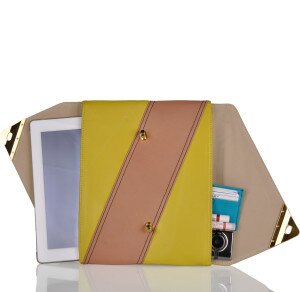
Envelope bag
Photo: ashardrichley.com
The Futo is an envelope-style clutch that features two full-sized overlapping asymmetrical pockets that can fit an iPad, and most other tablets, in one pocket without crowding items placed in the opposite pocket.
Shopper Katie Smith picked up one of the envelope bags in Dallas’ La Marque. Smith says she fell in love with the popping color and the functionality of the bag. The bag follows Burghardt’s motto: Fashion. Form. Function. She strives to keep all her pieces fashionable and multi-functional. Other than the envelope bag, another popular Ashard Richley handbag is The Riley.
This bag is made of fashion-forward lambskin and features chain-link handles in multiple sizes as well as a pop-out wallet feature.
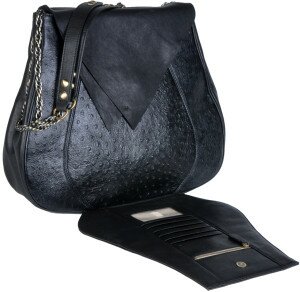
The Riley
Photo: ashardrichley.com
And Burghardt offers her most popular handbags in two lines — a pricier, upscale version. The Ashard Richley line, is the premium, real leather bags, while AR by Ashard Richley bags are made of synthetic leather.
Burghardt also recently added an apparel line to the Ashard Richley brand. One more reason those sewing lessons will come in real handy.
The Pioneer of Islamic Fashion
By Emily Sims
As a child in Turkey, Elif Kavakci witnessed her mother, a university professor, forced to choose between her career and her religion when the Turkish government banned the wearing of the hijab — the headscarf worn by Islamic women — due to complete separation of church and state.
Today Kavakci, the founder of Kavakci Couture, is not only an internationally known fashion designer but also a pioneer for hijab fashion and an inspiration to Muslim women around the world.
“I would put outfits together as a teenager and later on that turned into a more serious hobby and then finally it became a professional job,” said Kavakci, who’s clientele consists of powerful women like the wife of Turkey’s prime minister.
After moving to the United States when she was 12, Kavakci appreciated the religious freedoms the country offered but realized finding clothes that were conservative yet fashionable was nearly impossible.
Kavakci’s fashion hobby led her to take fashion design classes over a period of 10 years in which she also married and had children. Her love of styling eventually turned into a job and she began styling for fashion shows. Although the conception of her label was unintentional, the revolution she wanted to cause was.

Elif Kavakci via Kavacki Couture
“I had a hard time being a Muslim girl who chooses to wear the religious headscarf, finding clothes that would cover my body. Living in the U.S. where fashion kind of means showing more skin and dressing sexier makes it a little difficult for girls who want to dress conservatively,” explained Kavakci.
“We wear knee-length dresses as tunics because all button down shirts come above the hips and we have to layer our clothes instead. I had a hard time finding something I could wear and still express myself and look chic but still abide by my religious dress code.”
It wasn’t until 2007 that Kavakci’s career really took off. The Dallas-based women’s organization Peace Makers International approached Kavakci about showcasing her designs in a fashion show fundraiser. Even though she didn’t have a label, the organization liked Kavakci’s style and asked if she would be interested in featuring her designs.
“They felt it would be interesting to see conservative-wear on the runway,” said Kavakci. “At first I thought, I’ve done a lot of styling for fashion shows since 1993 and I’ll maybe put outfits together, but then I thought, I can’t put clothes that don’t belong to me on the runway–now that I’m a fashion designer I have to actually make my own collection and come up with my label.”
Over a period of six months, Kavakci designed her first collection and had the pieces made by a tailor in Turkey. Her first show, Covered in Fashion, took place on SMU’s campus in November of 2008.
According to Kavakci, Covered in Fashion received a lot of media attention since a fashion show where all the models wore hijabs had not been done before. Although Kavakci’s label received a lot of hype, she says the fashion show was not a business strategy but her start to making a difference.
“I was one of the first designers to put the headscarf on the runways,” said Kavakci. “There is so much negative coverage in the media about Muslim women and about women who dress conservatively so I wanted to send a positive image and do it through an art form. The models that walked the runway were not professional models but they were women from the community. So when the audience saw the outfits walk down the runway they knew this was a real Muslim girl.”
Photographer Nicole Queen met Kavakci after Imam Kavakci, Elif’s father, said her Shahada, her declaration of faith, when she converted to Islam. Kavakci approached Queen and asked if she would be willing to do a photo shoot of her designs and since then, the two have become close friends.
“Working with Elif is not work. It’s two friends who share a similar passion for Islamic fashion and feeling empowered through our faith. I love Elif’s ideas and designs and her attention to detail. Her clothing is always modest and always stylish, something that is rare in the Islamic fashion industry,” said Queen. “I feel inspired by her vision and empowered to use my abilities as a photographer in a way that also benefits my religious beliefs–this was all so new to me.”
Kavakci isn’t the only member of her family who receives a lot of media coverage. Kavakci’s older sister, Merve, is an internationally renowned women’s rights activist. She returned to Turkey after finishing school in the United States to run for Parliament and lift the ban of the hijab. Although she won the election, the ban prevented her from taking her oath. Her refusal to back down keeps Merve regularly in the press and in need of styling, which she receives from Elif.
After news of Kavakci’s label spread to Turkey, Kavakci picked up another prominent client, the wife of the Turkish Prime Minister.
“I had styled and designed for my oldest sister who is in politics in Turkey. She’s in the media a lot and everyone automatically picked up the last name and recognized I dressed her. When [the Prime Minister’s wife] read about my fashion show at SMU she thought, ‘Oh, my gosh. I know her and I need outfits designed.’ They always have occasions where they need something to wear, and so she contacted me, and I have the pleasure of working with her and their daughters,” said Kavakci.
After her career took off, many Muslim women inquired about purchasing her clothes. However, Kavakci Couture is a couture fashion line–nothing is mass-produced and everything is made by hand. Currently, Kavakci has a private clientele that she styles and designs for. Although her line wasn’t available to the general public, Kavakci felt she needed to give something to these women who were reaching out.
Kavakci started her blog, Hijabitopia, as an arena where she could give fashion advice to Muslim women. What initially started as a fashion blog quickly turned into a lifestyle blog, filled with inspiration and role models for Muslim women.

Elif Kavakci via her blog Hijabitopia
Nazreen Hassan, co-editor of Hijabitopia and Kavakci’s best friend, moved to Dallas from Johannesburg, South Africa, when she was 7 and met Kavakci when they were little girls taking classes at their Mosque. When Kavakci came to her with the idea of the blog, Hassan was fully supportive.
“I consider [Kavakci’s] family, my family. She’s been my best friend for over 20 years and we’ve experienced the ups and downs of life as hijab-wearing women together. So naturally, when she had this idea to start the blog, she pitched the idea to me, and I, of course, thought it was a fantastic idea and jumped onboard,” said Hassan.
Like Kavakci, Hassan grew up struggling to find conservative yet fashionable clothes and dealt with the prejudices that can come from being different.
“Wearing hijab is not easy,” said Hassan. “I grew up being the first one to ever walk [into] my junior high school donning a headscarf. It scared people, I think. To be honest, it sometimes scared me, only because of reactions I got and mean kids. But I knew in my heart that it’s what God wanted me to do, so I did it for Him.”
For Hassan, the only person she had to turn to was Elif. Now she feels as if the digital age has opened the door for Muslim women everywhere to find support, which is what she wants Hijabitopia to be.
“At the time, I didn’t have a big social network to turn to for encouragement or questions or help with what to wear [or] how to deal with mean kids who would pull my hijab off. I really just had Elif,” said Hassan. “With today’s digital age, information, support groups, blogs, you name it, are readily available through the click of a mouse. And there’s so much comfort in seeing other people like you out there, facing the same struggles and challenges.”
According to Queen, she believes the blog reaches out to women in a way that wasn’t previously done.
“[Elif] was a catalyst in that sense,” said Queen. “Now there are all types of Muslim fashion blogs and girls claiming to be Muslim designers, but Elif still continues to pave the way to be ‘the real deal.’ The blog connects with every woman’s instinct to want to be beautiful while also maintaining a balance between that beauty and our faith. This is a line so fine you need a magnifying glass to see. Hijabitopia never ‘sells out.’ They never push anyone towards making sexual appeal or materialistic things more important than their sense of faith. Plus, I love her segments like ‘Superhijabi’ that showcase powerful out-of-the-box veiled women. It never ceases to impress.”
According to Hassan, she and Kavakci both write and edit pieces for Hijabitopia. The women post pieces that they hope will provide readers with information, advice or guidance.
“Our readers want to read about any superhijabi in the news, such as Ibtihaj Muhammad, the U.S. World Fencing Champion, convert stories or interesting things relating to Muslim women in the media, and finally, fashion trends and how you can modify them to fit into your hijab-wearing wardrobe,” said Hassan. “Our goal is to inspire our readers and the world by showing them that it is possible to be modern and stylish while still following the tenets of our beautiful faith, Islam.”
Hassan and Kavakci both feel that it is hard for young Muslim women, especially in the U.S., to have a prominent female figure to look up to. By posting stories about Muslim women in the media around the world, they hope to give young women now what they didn’t have.
“I feel in America they don’t really see role models on TV that have their religious views. When they see Miley Cyrus on the TV, they can’t relate to anything,” said Kavakci. “I thought, what if I start a blog where we can share some information and promote being a good Muslim girl and being religious but at the same time it’s fun.”
Queen has lived on both sides since she grew up as a non-Muslim. She says that deciding to wear the hijab after converting to Islam changed her life for the better.
“I was invited to stay a month in Jordan and I had this idea that everyone there would be dressed in hijab and that if I wanted to fit in I needed to wear it, too. So I packed my bags full of Islamic attire and took off for Jordan,” said Queen. “For 30 days I wore hijab and spent my time with Muslims. By the time my trip was finished I knew there was no way I could detach myself from my new modest image. It felt too good to give up. I felt respected as a woman, like I didn’t have to compete anymore, I was just a modest religious girl now. It was a good feeling, coming from someone who was very vain and physically obsessed with attention and opinions of my image.”
Now as a Muslim woman who chooses to wear the hijab, Queen believes that wearing the hijab is important for more than just following religious practice.
“It’s important because our society is completely breaking down all around us. Yeah, wow, that’s quite a reason. Well, look back in history and women’s clothing compared to the amount of respect given. Women of history fought hard and sacrificed everything so we could have rights in the ‘free world.’ They picketed and were arrested and persecuted so we could have the right to vote, own corporations, get a college degree in the same school a man could. The list is endless and slowly we are just walking around naked, with endless freedom and no sense of when we have gone too far,” said Queen.
“They fought for our right to be heard, but today our voices are clouded by our desire to ‘twerk’ our way to the top in the most revealing way possible. If you want to be at the top, you have to be willing to go as far as any other. I ran away from all of this and into the arms of my faith, and dressing modestly never made more sense. The real question: Why wouldn’t someone want to wear it?”
Kick Up Your Heels
Stacy Radley

Image via Up Scale Hype
Stilettos can make an intimidating impression. So how did stilettos go from being worn solely to intimidate to being worn for fun as well? Two words: Carrie Bradshaw.
Although Carrie, our heroine of Sex and the City, is not the sole fashionista to contribute to the stiletto’s popularity, she will forever be associated with the shoe. Carrie helped put designer Manolo Blahnik on the map and made a single pair of sapphire Manolo Blahniks famous. Now that’s power!
Stiletto heels got their name from a stiletto dagger, a short dagger with a tapering blade, while stiletto heels are similarly defined as a “thin, high, tapering heel on a women’s shoe.” You definitely don’t want to be on the wrong side of that heel.
Background
High heels – any shoe in which the heel is elevated to a point higher than the toe — have played a role in society for centuries. High heels have been traced back to Catherine de Medici in the late 16th century, who claimed she required some extra height to be considered beautiful by men.
Others have attributed the high heel’s conception to horseback riders who were having difficulty keeping their feet in the stirrups. So, a small heel was added to the riding boots.

Image via Dover Saddlery
Michelle Reyes, curator at Toronto’s Bata Shoe Museum, has traced heels all the way back to the 9th century because of art depictions on Persian pottery. The high heels in 9th century Persia are believed to have been created for horseback riding as well. Then, as time went on, an elevated heel became a stylish look.
Both men and women have been known to work the high heel. Great European leaders wore shoes with less than a subtle heel, even when they stood for their most significant portraits. Since their conception, society has viewed high heels as a sign of wealth and status. In the early years, only royals and aristocrats wore high heels—so only people with an absurd amount of money, power and status.
The stiletto on the other hand, is still a fairly new phenomenon.
History
Stilettos are much younger than their general high heel relatives. They were born in the late 1940s when women wanted more height in their shoes and got their first public mention in London’s Daily Telegram in September 1953.
The stiletto took heels in a new direction, with a chic and sexy look. Their popularity took a dip during the late 20th century when heels became thick and block-like, especially during the 1990s. But the stiletto made a comeback at the beginning of the 21st century.

Image via Fooyoh
Chelsea Bell of SMU’s Fashion Media department, expects the dip in the stiletto trend to definitely happen again once another style becomes popular, just as it did in the 1990s.
Stilettos are such a popular shoe, women will wear them religiously no matter what the cost—no matter if they are uncomfortable or outrageously expensive. Stilettos make a statement that women are willing to pay the price — literally and figuratively — since our stilettos may be detrimental to our health. Not only could a misstep cause a sprained ankle or a broken bone but, in the long run, arthritis in the foot and ankle.
Stilettos Today
There are many forums in society today in which one glance toward the ground will reveal a sea of stilettos. Stilettos by definition are worn by a wide variety of women. Any thin tapering heel is considered a stiletto; the height of the shoe is not a factor. This means even slender, little 1-inch heels and have even the slightest taper are considered stilettos. But societal standards have dictated a stiletto also needs to be high, approximately 3 inches or greater.

(L-R) Images via Yasmine Blog, D Best Style, D Best Style
Stilettos have a place in many different niches of society. Women wear them in both professional and social settings. Male business professionals have agreed that in a professional environment, wearing a pair of stilettos makes a woman seem more credible and good at her job. When these female professionals need to make their way in a man’s world their stilettos can help them show their male counterparts that they are a force to be reckoned with. On the other hand, Bell says, “as much as [we] love[s] high heels, they are not a practical footwear choice for most occasions.”

Carrie Bradshaw rocking the stiletto. Photo via Living the Dream
When we’re all staring into our closets each morning pondering our outfit, imitating Carrie Bradshaw’s style is not the first thing that pops into our heads. But her look of style, class, and personal flare almost always seems to be important. We want to look both credible at work and attractive at play. Cue the stilettos.
Dress to Impress Yourself
By Cassie Mlynarek
In May of 2005, Paris Hilton appeared in a wearing a racy string bikini while she soaped up a Bentley and took a huge bite out of the “Spicy BBQ Six Dollar Burger” and proclaimed her signature phrase, “That’s Hot.” Hilton’s ad was later banned from television it was so lewd.
The commercial received, unsurprisingly, a lot of attention and, while her performance did not do much to improve burger sales, it created a debate over whether or not images like this one encourage negative stereotypes of women regarding how they should look and dress.

Paris Hilton in the infamous Carls Junior ad.
Thin frame, glowing tan skin, curves in the right places — and sexy outfits: This is the description that defines women we see every day in movies, magazines and essentially all media outlets. In one day, the average person sees up to 5,000 advertising images. That means that 5,000 times a day, your head is filled with ideas and portrayals that affect you mentally whether you know it or not.
In movies like the James Bond series, women wear sexy gowns with plunging necklines that would put Jennifer Lopez to shame — only to later lose their frocks in a scene of heated passion. These images give society, especially men, the idea that this is how women should dress. But do women really dress like this today? Is the definition of sex appeal changing?

Eva Green in James Bond movie Casino Royale. Photo via Fashion and Pop Culture Magic
In the past, men have often controlled the way women presented themselves. Until the 20th century, women could not wear pants. They couldn’t show their legs at all because they had to present themselves as pure in order to have any chance at marrying.
As history progressed and women gained more independence, men had less and less say about what women could wear, but their influence has never faltered. Today, however, less has become more. Scantily clad women are used in commercials as sex symbols to attract men to certain products. The Paris Hilton ad is a perfect example of this.
Cara Jacocks, a professor of communication studies at SMU, agrees that the media’s influence on how women should look and dress is overwhelming. “Advertisements, television and film portrayals of women consistently remind us that women should behave and work in particular ways. Even today we are rarely exposed to images of women who maintain powerful leadership positions in our communities and organizations,” Jacocks says. “The absence of these types of images in mainstream media is a powerful message.”
Women Who Break the Sartorial Stereotypes
Tastemakers such as Leandra Medine, creator of the blog The Man Repeller, have spoken out against the skin-tight dresses and declared their individuality through fashion. Medine started her blog to give other women confidence in their eccentric fashion decisions. Medine herself has been known to wear all denim outfits with fur vests. She encourages these unconventional ways of dressing because she believes fashion is not about pleasing men, but about dressing in a way that represents who you are. Medine, along with her millions of followers, is defying all media stereotypes and creating a new kind of sexy.

Leandra Medine. Photos via Man Repeller
But it isn’t just bloggers who are embracing this fashion phenomenon. Leading designers such as Miuccia Prada have been pursuing this idea as well. Prada told Women’s Wear Daily that she is “always trying to do something that is…never to please men in the most banal way.” “But of course, to please men or whatever your preference in sex is—seduction is very important for all people.”
This fashion icon has always embraced the idea of femininity and her designs reflect how the real woman dresses. She acknowledges that sex appeal is still very important to most people but her designs do not attract members of the opposite sex in predictable ways.
Smaller boutiques have also noticed the trend of individuality in fashion and have begun catering their styles to a more fashion-forward, subtly sexy woman. Allison Treadway, store manager at The Impeccable Pig boutique, tries to follow this idea closely.
“I think we always try to get to know our clientele when they come in, what they’re looking for. What kind of styles they tend to go for. We always try to spice it up,” she says. “Even though a more sexual side of fashion is covered in the media, I don’t think that is accurate with boutiques and the real day-to-day woman. Obviously what’s in the media or latest celebrity wear is not what an everyday woman is wearing.”
The store’s style features over-sized sweaters, potato sack dresses, flannel tops and eccentric prints of all shapes and colors. Women are becoming more and more attracted to the idea of pleasing themselves, and the fashion world itself is reflecting this change. Sam Perry, a model from Chicago and SMU student, has experienced this trend firsthand.
“Sexy just isn’t about the skin of a woman’s or a man’s body anymore. Rather it’s how they represent themselves, which is shown through clothes,” Perry says. “I show my personality through baggy T-shirts, classic band shirts, a nice pair of boyfriend or skinny jeans, and a pair of black boots.”
Sex appeal is just as important as it has always been, but women are redefining what it means to be sexy. It is true that men appreciate a plunging neckline but they also appreciate a woman’s confidence. Let’s give them a little credit.
The media has a profound impact on the way society views how women should dress but it does not define the way women have dress. So wear a fur vest with denim jeans and the effervescent prints, it’s time to break the sartorial stereotypes.



